Cooperative story-telling games are the apex of group entertainments. That is a conviction of mine that no amount of persuasion has ever been able shake. And Dungeons and Dragons is the father of them all.
It’s been a major influence on my storytelling all the way back to childhood.
My brother (who is fifteen years my elder) introduced me to Dungeons & Dragons by making it a private thing that I was forbidden to participate in.
(So of course, I had to find out everything I could about it!)
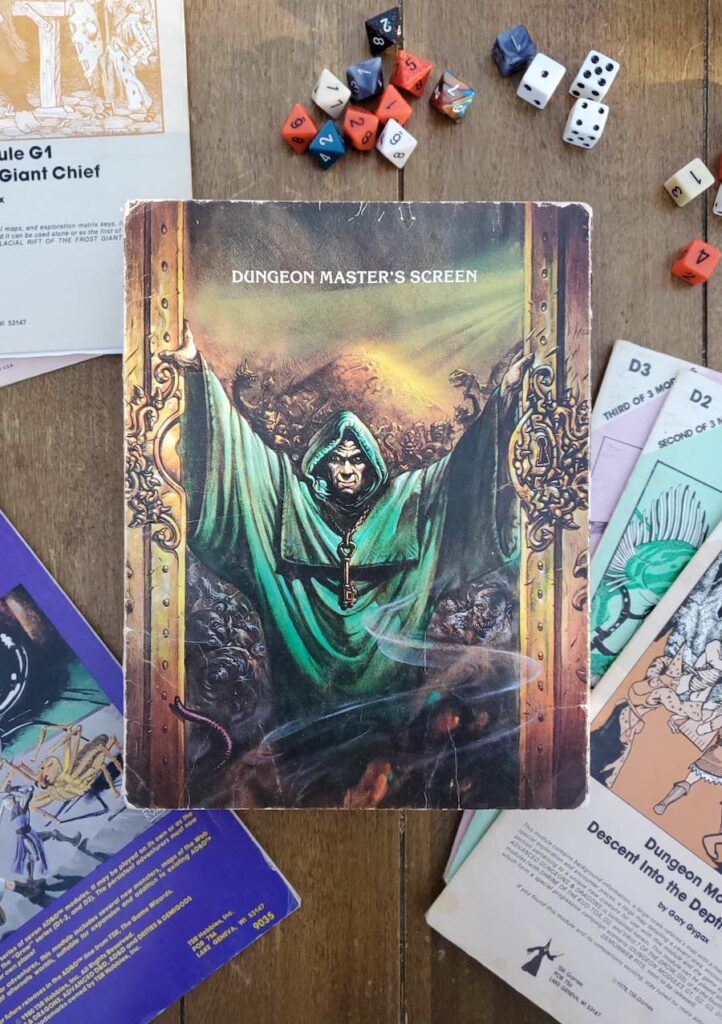
He would have his friends over, they would go into his room, and lock the door so that no little children could disturb them. There could be found the big table, the screens, the strange dice, the little pewter figurines, the character sheets, the notes, and – of course – the books.
Books filled with monsters and mysterious places.
But, most precious of all, was the portable metal filing box, packed with all the classic modules and notes from The Campaign – the big one that my brother ran from high school into college and beyond.
Epic.
(That filing box is now in my possession, as it would happen.)
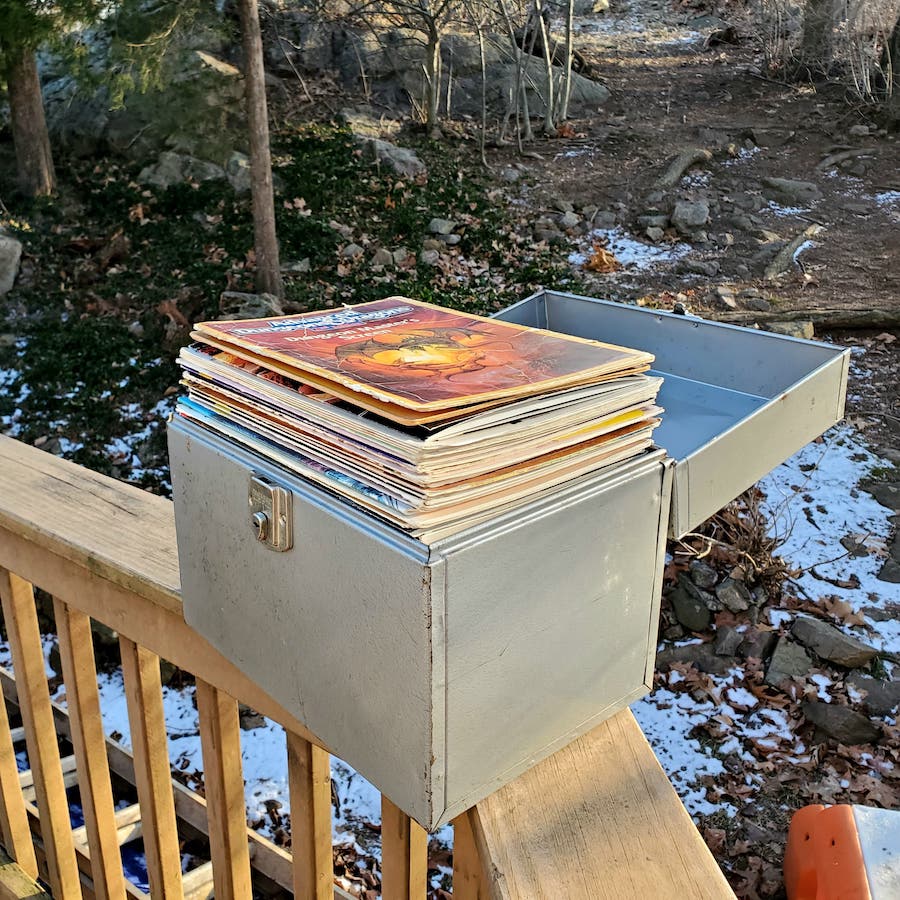
Of course, I wanted in on all this wondrous fun, but, as I said, the door was always locked and no pleaful entreaty or word of power would open it.
And So It Began
Then one day, my brother bought me a 2nd Edition Player’s Handbook, sat me down and DMed for me. He helped me craft Draco, a 7th level Magic-User.
That was my first character.
I had a ring of shooting stars and a custom designed Laser spell in my 4th level spell slot. And I took down a flesh golem in plate armor (without any understanding to what had transpired).
That was the beginning for me.
From there I went on to receive or buy more books of my own: a Monstrous Manual, a Dungeon Master Guide, a Dragonlance sourcebook, boxed sets like Council of Wyrms and Night Below. I introduced the game to my friends, but I never understood the rules for 1st or 2nd Edition.

Sure, I could read a chart and tell you how to do THAC0 (To Hit Armor Class Zero) and AC – but I didn’t really understand the game.
Still, when you’re young and you can’t figure out the rules to Axis and Allies, you can still play with the pieces, the board, and the dice (and lose a bunch of them, true story).
So I did.
The Glories of Combat
It wasn’t really about story-telling at first.
D&D was about aesthetics and combat scenarios. My friends and I would make 7th level character after 7th level character loaded up with goodies and fudged stats (sure, you can roll a fighter up, but who really wanted to play one without epic strength?)
Sometimes we’d run them for more than a night’s fun but in those early years it was all about the decisive moment. Why, Blue Milk Champion, once slew a venerable blue dragon with a double crit while dual-wielding longswords (don’t dig too deeply into that one, you won’t find Luke Skywalker).
Over the years we’ve riffed a lot on the tavern opening, though most of them devolved into brawls that brought in the local guard and the innkeeper (who was ofttimes a retired 10th level fighter with a soul-stealing sword).
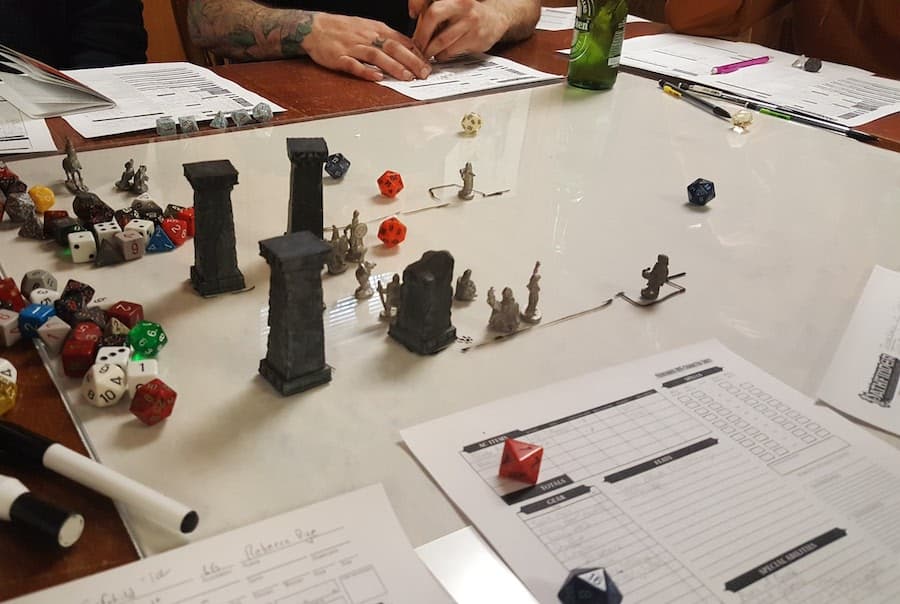
There were lots of battles against worgs, plenty of wererats, and never, ever, ever those nasty spectral undead with stat drain or level drain (until late into high school when I was told to, and I quote, “Take the gloves off.”)
And, of course, we drew lots of maps: cities, countries, continents, worlds. (Cartography is one of the great gifts of roleplaying games.)
The Campaign
Sometime in high school, my desire to have a story like my brother’s grew great.
And so we began The Campaign.
By then I had my own subscription to Dragon Magazine, and I even read some of it (I always looked at the pictures and the comics) so I had some articles to draw on to help me out, especially Ray Winninger’s “Dungeoncraft” Essays from 1997 to 1999.
That’s how I first really started applying logic and structure to the whole D&D thing.
And those are the keywords really: logic and structure.
I still improvised, often throwing in a dramatic encounter out of nowhere, but now I felt the desire to bring order into my worldbuilding and storytelling.
I’ve never really outgrown my habit of improvisation – there’s a certain exhilaration it brings – but I’ve learned how to prepare so that I improvise within constraints (now that’s a lot of fun).
We started The Campaign for real at the end of high school with the arrival of 3rd Edition D&D. It was Forgotten Realms (those books were just so very well put together). From 4th level to 21st we actually told the story of The Band of the Red Lion (we never finished, though we got to the beginning of the final scenario).

It was a bloated and misshapen story, though I couldn’t see that then.
And I love it still.
Aesthetics demanded that I throw in every baddie that I liked into the story, and while Forgotten Realms can handle that kind of load by design, that doesn’t always make for a good story.
Still, through time and refinement a core narrative emerged from all the hours of design and play. It’s actually not a bad core concept, maybe someday it will take shape and live again.
There were also some good moments in there, even one solid scenario that I pre-wrote beat by beat (“That Which Should Not Be,” which was designed especially for our dwarf Bondblade Wulfgar) and another great scenario that I improvised from concept to conclusion (“The Assault on Castle Perilous”).
I became a master of one-sitting adventures during that period: give me four hours and we’ll git-er-done.
Now, admittedly, the game was mostly about combat, and even that wasn’t that elegant. Yes, there was role-playing, but my crew – at that time – they loved a good throw down.
The Wilderness and the Stars Beyond
After high school, I went through a period of uncertainty, purposelessness, and depression. D&D with the guys was one of the anchors of my life (we even got into Star Wars Saga Edition with all the plastic figurines).
Once to twice a week, we’d gather at my parents’ home with pizza and go questing.
There were some flashes of Dungeon Mastering virtuosity in there, but mostly in the combat mechanics side of things. It was fun and everyone looked forward to it – no one more than me.
But I didn’t know what I was doing with my life, and that nearly killed me.
In 2004, everything changed when I became a Christian.
I wasn’t all better at once, but I had found my way to live in the world. And there was a period where I set aside D&D for a time while I worked things out.
But eventually we got back to playing – and we still do to this day (though mostly these days, when we play, it’s Star Wars). We roleplay a lot more than we do combats and we’ve got a story going, a real epic story that we’re all excited about.
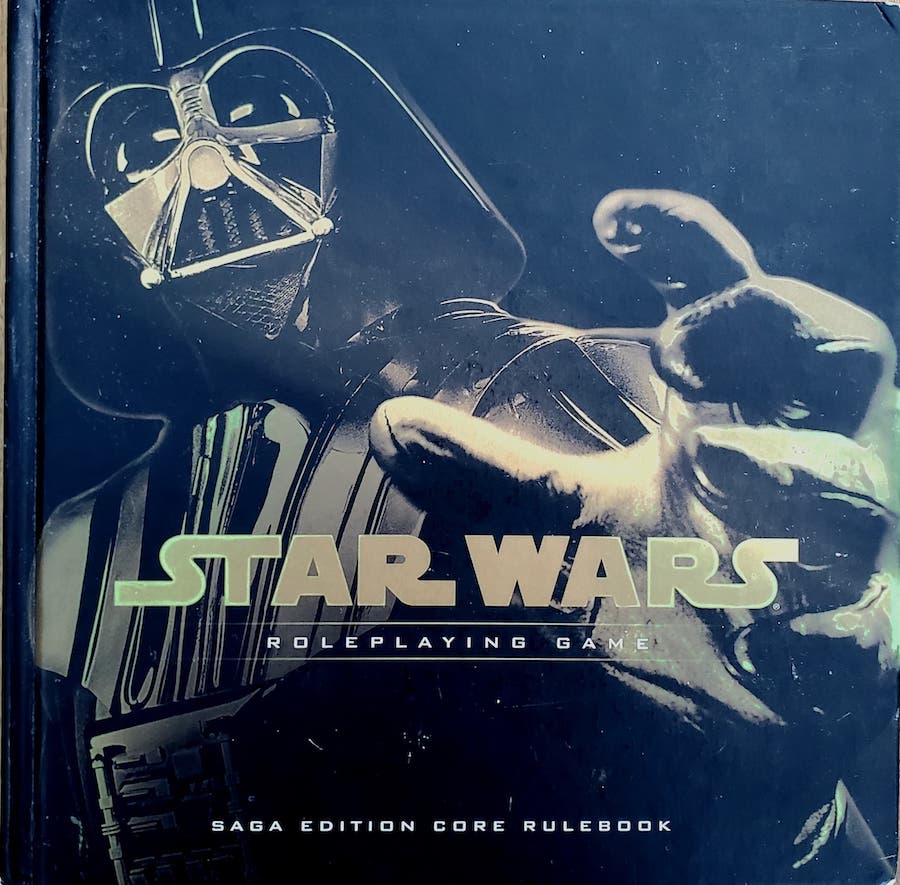
Maybe we’ll finish this one. (If we can ever find the time to get together!)
This brings me to the late but best fruit of my time playing tabletop roleplaying games:
As a boy, I loved the aesthetic of the monster versus the hero (and I loved playing the monster). As a young man, that element of competition took on more substance: I devised more in-depth and time-consuming combats that allowed me to push my friends to their limits.
But I also began to hunger for coherence and continuity in my gaming and storytelling.
As a man grown, the privilege of coming around a table to cultivate a story with the players who are telling it is the great reward.
Believe me, when your players call you to talk about the arc of their character and where they think the story is going, you know you’re doing something right.
That doesn’t mean I don’t enjoy the aesthetics anymore, the story still needs to be dressed up nice. And those combats…well, you know:
Roll for Initiative.
Want more words? See the horse below about a newsletter. Or scroll on down to make a comment.

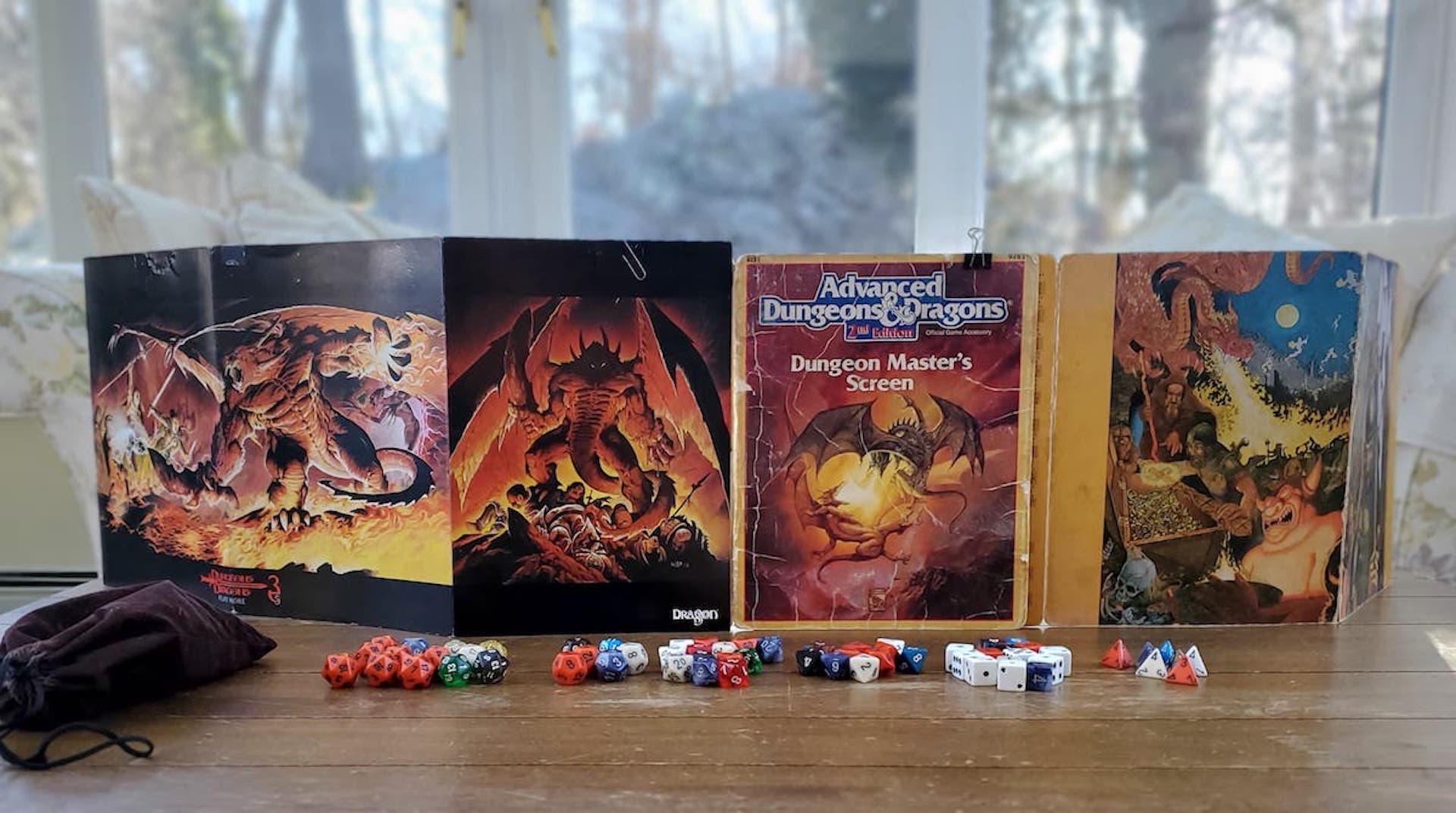
“As a man grown, the privilege of coming around a table to cultivate a story with the players who are telling it is the great reward.
Believe me, when your players call you to talk about the arc of their character and where they think the story is going, you know you’re doing something right.”
And yet Diogenes is STILL stuck in that bag of holding!
Is that where we left Diogenes? I remember we’re in the underground city with the temporal stasis unravelling and I have a memory of dragons coming to speak with the party. Wait…did half-dragon golem monsters kill him and we’re waiting on a res from Rosie? This sounds familiar to me.
A centaur with a great ax one-shotted him with a crit during a surprise round as we were beginning to explore the entrance to the underground city. We tossed him in the bag for preservation. Elanore (Rosie) couldn’t Res because she was still being interrupted by that demonic presence.
I don’t recall anything about dragons. There was a golem of a sort (some sort of demon construct/armor thing that Wade was interested in wearing after killing it), but I think Diogenes was already pushing daisies.
We had never made it to the city proper, but we were discussing over the phone the likelihood of a planar ally being sent to the party as we were going to be facing mindflayers and a Rakshasa. IIRC, we were discussing a miraculous resurrection of Diogenes coinciding with a divine exorcism of Elanore at the moment of the expected TPK and, through momentary divine inspiration, destroy the Rakshasa.
That all sounds both appropriately epic and plausible – especially the planned resolution. (Though I’m pretty sure I would never conjure up a Centaur – a Minotaur, with a great axe, that I would send into to battle.) I also think I remember the BBEG was a Shaper, closer in spirit to a Mind Flayer than to a Rakshasa (but I can’t say for sure, not knowing where those notes are).
That was the campaign where I was fumbling into the pivot toward story-centric gaming – and I remember it being quite sloppy and haphazard on my end. Misshapen basket-weaving is what Damon Knight would call it. (We also had some long and involved combats, at least one boss fight ran beyond 4 hour territory.)